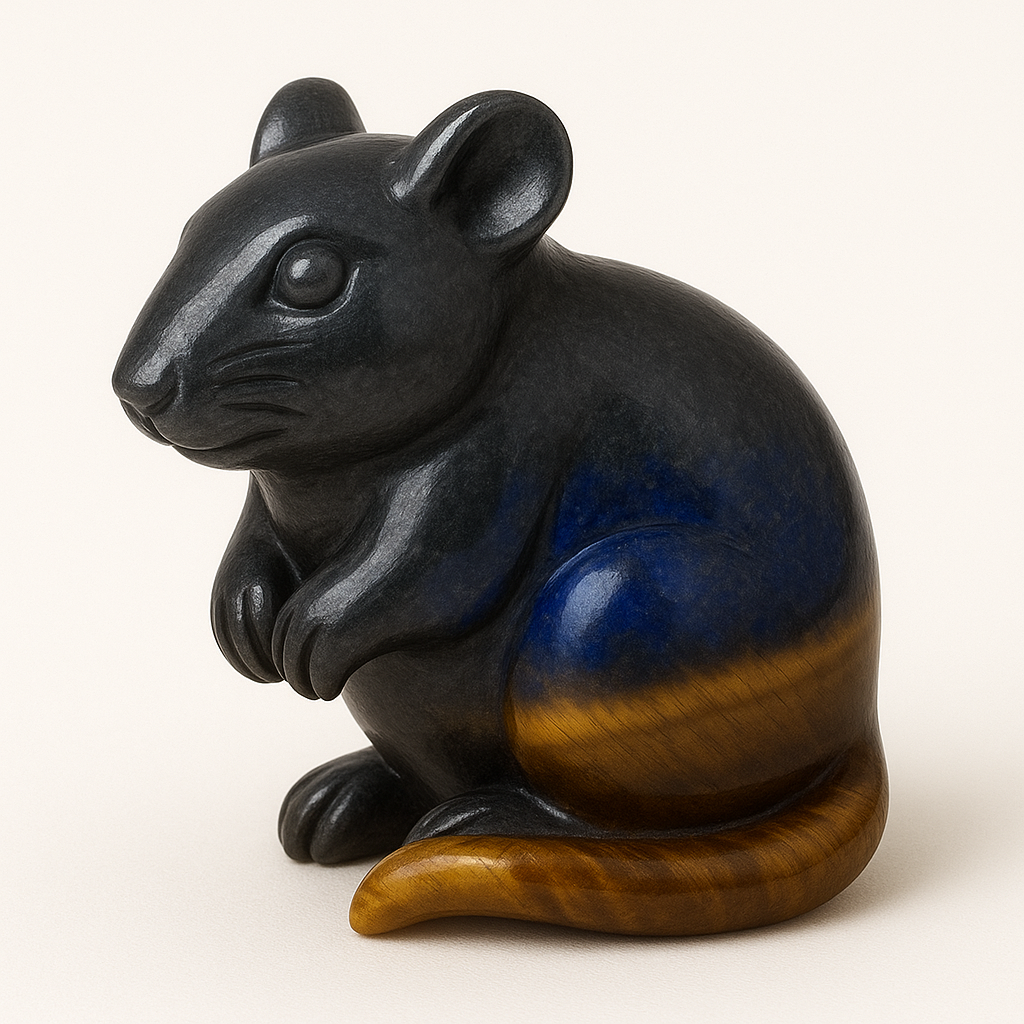
The Symbolism of Rats
Share
Small-bodied yet immensely resourceful, the rat moves through the forgotten places—beneath floors, behind walls, within the infrastructure others do not see. It is a creature of persistence, adaptability, and survival intelligence. Often misunderstood or maligned, the rat holds the vibration of hidden mastery, of thriving under pressure, and of navigating complexity without complaint.
To contemplate the rat is to understand the energy of creative instinct, of cleverness beneath modest form, and of a being that survives not through force but through intuition, learning, and resilience.
The Clever Survivor in Cultural Memory
In many cultures, the rat appears at the threshold between filth and fortune—reflecting the human projection of both fear and admiration.
In the Chinese zodiac, the rat is the first of the twelve animals—quick-thinking, resourceful, and intelligent. Its placement at the beginning of the cycle honors its sharp instinct, opportunistic wisdom, and capacity to find paths where others see obstacles.
In Hindu tradition, the rat is the vehicle of Ganesha, remover of obstacles. This is not irony—it is symbol. The rat, small and persistent, reaches places where larger beings cannot. Thus, it becomes the carrier of divine will through hidden channels, showing that even the lowly form can fulfill high function.
In Western societies, rats are often symbols of disease or infiltration—but beneath this shadow lies a deeper archetype: the one who enters the unseen, survives what is toxic, and emerges with knowledge of what others avoid.
Instinct, Ingenuity, and Hidden Community
The rat is not solitary. It lives in complex social systems—coordinated, communicative, and emotionally intelligent. It knows how to protect its group, how to hide from threats, and how to rebuild when its environment collapses.
Its intelligence is not abstract, but practical. It learns quickly, remembers routes, solves problems, and adapts to any space. It thrives not by overpowering, but by outmaneuvering, making it an emblem of adaptive mind and quiet precision.
Where others seek visibility, the rat seeks effectiveness. It does not demand recognition. It achieves what it must and moves on—unseen, unthanked, yet influencing the flow from beneath.
Resonance with the Energy Centers
The rat resonates primarily with the red-ray energy center—the root chakra, which governs instinct, survival, physical continuity, and the relationship to material environment.
Its entire life is built on alertness, grounding, and adaptation to changing conditions. It senses danger before it arrives, locates shelter before the storm, and feeds its young even amidst chaos. The red-ray energy in the rat is not primitive—it is refined through pressure, honed to a point of precision and mastery over survival without distortion.
There is also a secondary resonance with the yellow-ray energy center—the solar plexus chakra, which governs social coordination, role within group identity, and strategic expression of selfhood. Rats do not merely survive individually—they form networks, work together, and adapt as a collective. Their intelligence is not only instinctual—it is social, strategic, and organized beneath the surface.
Together, red and yellow form the energetic signature of the rat:
Instinct informed by strategy, and survival enhanced by social structure.
The Master of the Underworld Path
To walk with the rat is to learn how to move through hidden systems, how to navigate what others ignore, and how to find nourishment where none appears to exist. The rat teaches that there is wisdom in unseen labor, dignity in being underestimated, and power in functioning below the structures others rely upon but do not understand.
It reminds the seeker that the path of light is not always up. Sometimes, it is beneath, in tunnels, in crevices, in discarded places—where old energies must be transmuted and new resilience born.
The rat does not decorate its survival.
It embodies it.
It does not ask to lead.
But it will outlast the one who does.